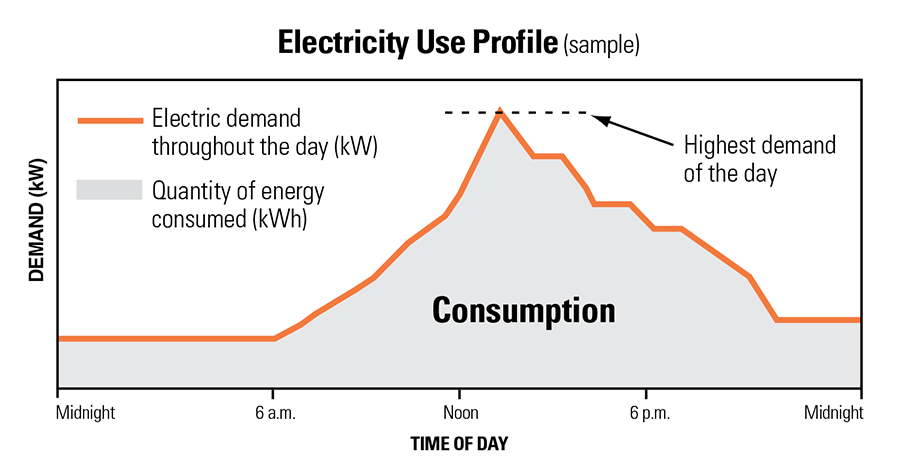Understanding demand charges
Knowing how your electric use is billed and how your demand and energy charges are calculated will help you understand and manage your total energy costs.
The electricity use diagram below shows the difference between energy (kWh) and demand (kW):

Understanding the energy charge
Energy charge is the calculation of the amount of electricity kilowatt-hours (kWh) consumed during the billing period.
Each of the 10 light bulbs above uses 100 watts of electricity. If all 10 are lit for one hour, they will have consumed one kWh of electricity:
10 light bulbs x 100 watts x one hour = 1,000 watt-hours (1 kWh)
Depending on your rate, your meter may also record the amount of energy used on-peak and off-peak.
Understanding the demand charge
Demand is the rate at which you consume electricity – or the amount needed to power your home/business at any given point in time. Your demand charges are based on the highest level of electricity supplied at one time during the billing period and at the time of day it’s needed by your home/business.
A single light bulb demands 100 watts of electricity at any given moment.
In the energy charge example, the 10 light bulbs demanded 1,000 watts (1 kW) of electricity to operate.
